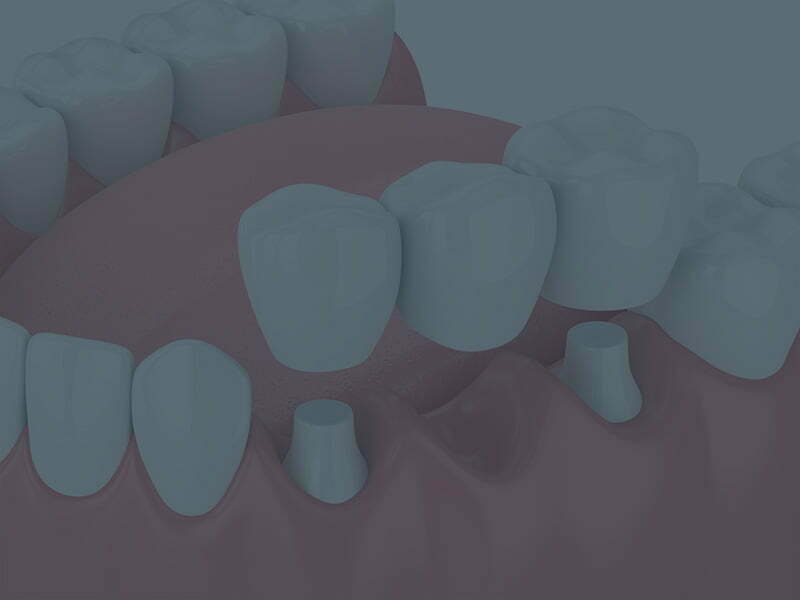

A dental bridge is an effective option for replacing a single tooth or a few missing teeth. It is permanently fixed to your teeth and is dependent on having healthy teeth on either side of the space to use as support.
There are a number of different types of bridge available, and your dentist will be able to discuss the best option for you at your initial appointment.

Resin bonded bridge – This is a minimal bridge that, when placed correctly with a keen eye on your bite, can be very successful. It is essentially stuck to the back of the tooth and does not require much preparation of the inside of the teeth.
Cantilever bridge – One adjacent tooth is prepared for a full crown. This design is ideal when the tooth being replaced is smaller or similar size to the tooth being used as support. Frequently used when replacing premolar teeth.
Fixed-fixed bridge – Two adjacent teeth are prepared for full crowns. This design is ideal when replacing many teeth over a long span.
Fixed-mobile bridge – Two adjacent teeth are prepared, cast as 2 separate pieces which interlock when fitted. This is the best design for short spans and for people that place a lot of stress on their teeth through grinding.
Implant supported denture, single crown or bridge – This is the one option that does not involve preparing any adjacent teeth. Instead of a tooth supporting the bridge, an implant is used. This is obviously the most respectful to other teeth as no drilling is done.

Bridge treatment may sound scary, but many of the steps involved are the same as a crown. It is a perfected routine procedure which has been performed at the practice many times.
During your consultation appointment, we discuss the colours, shape and style of bridges available to you, and exactly how you would like your teeth to look. Bridge treatment is carried out over two appointments.
After a bridge preparation, your lips and gums may remain numb for a few hours until the anaesthetic wears off. You may feel some discomfort, but this is temporary and can be managed with over the counter painkillers. You may find it feels strange to bite down. If you do, return to the surgery to have some adjustments made.